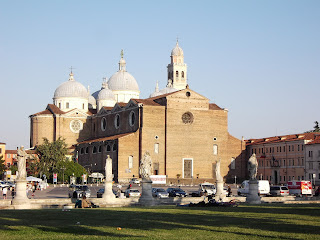Author has achieved worldwide fame
The novelist and journalist Matteo Strukul, whose work
has now been published worldwide in many different languages, has just
celebrated his 51st birthday. He was born in September 1973 in Padua and he set
his first novel in his native region of the Veneto.
Matteo Strukul, born in Padua in 1973, is best
known for his novels about the Medici family
Strukul is best known for his four historical novels
about the Medici family, which were set in Florence between the 15th and 17th
centuries and followed the rise of the house of Medici. They all became best
sellers in Italy and have sold more than 500,000 copies worldwide.
The first novel in the series, I Medici, una dinastia
al potere, was awarded the Premio Bancarella in 2017. This prestigious award
has been won in the past by Ernest Hemingway, Boris Pasternak, Umberto Eco, and
Ken Follett. The novel was published in English in 2019 under the title Medici
Ascendancy.
Matteo Strukul studied law at the University of Padua
and went on to study for a PhD in European Contract Law at the Ca’ Foscari
University of Venice.
Strukul’s debut novel was a dark thriller set in the
Veneto, which was published in 2011 in Italian as La ballata di Mila. The novel
was then translated into English and issued in 2014 under the title of The
ballad of Mila. Strukul’s novels have now been translated into more than 20
different languages.
The author is also an adjunct professor of interactive
storytelling at Link Campus University in Rome and writes in the cultural
section of the weekly magazine Il venerdi di Repubblica..jpg)
Strukul studied law at the University of Padua,
whose main building is the Palazzo Bo (above)
His latest novel, La crypta di Venezia, was published
in April this year (2024).
Strukul has also written Vlad, a comic book trilogy,
for the publishers Feltrinelli, based on the historic character of Vlad the
Impaler. This was the man who gave Bram Stoker the inspiration for the
character of Count Dracula.
Matteo Strukul is the creator and founder of the
literary movement Sugarpulp and artistic director of the festival of the same
name.
On the Sugarpulp website he says his favourite wine is
Raboso del Piave, which is said to be an austere wine with aromas reminiscent of morello cherry, wild
blackberry and plum, but also cinnamon, leather, vanilla and pepper
The writer now lives between Padua, Milan, and Berlin.

.jpg)


.JPG)
